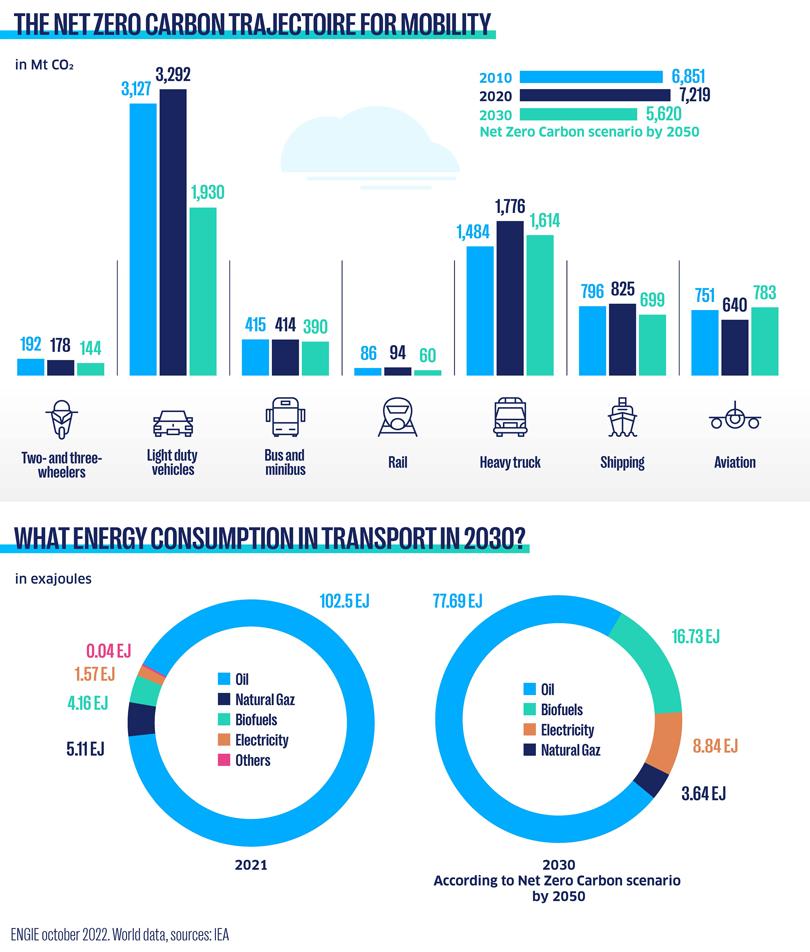
What is clean mobility?
Also known as sustainable transportation, the concept aims to meet people's travel needs while reducing the transport sector's carbon footprint. As an integral part of sustainable development, clean mobility addresses a number of challenges: environmental, to cut the CO2 emissions that are causing climate change and reduce pollution as well as our dependence on non-renewable energy sources; economic, for long-term mobility that will benefit the economy and employment; and social, for inclusive mobility that will make it easier for everyone to get around.
How do we go about decarbonizing transport?
Although there is still much to be done, public awareness is now raising quickly. Public authorities, citizens and economic players are taking action on many different levels. The principal courses of action are:
- Reducing our journeys by continuing to encourage work from home, car sharing and carpooling.
- Developing decarbonized public transport and making it accessible to as many people as possible.
- Expanding soft mobility options in urban areas, for example by developing cycle path networks or by offering incentives to purchase or hire bikes.
- Continuing to replace combustion-engine vehicles with electric alternatives.
